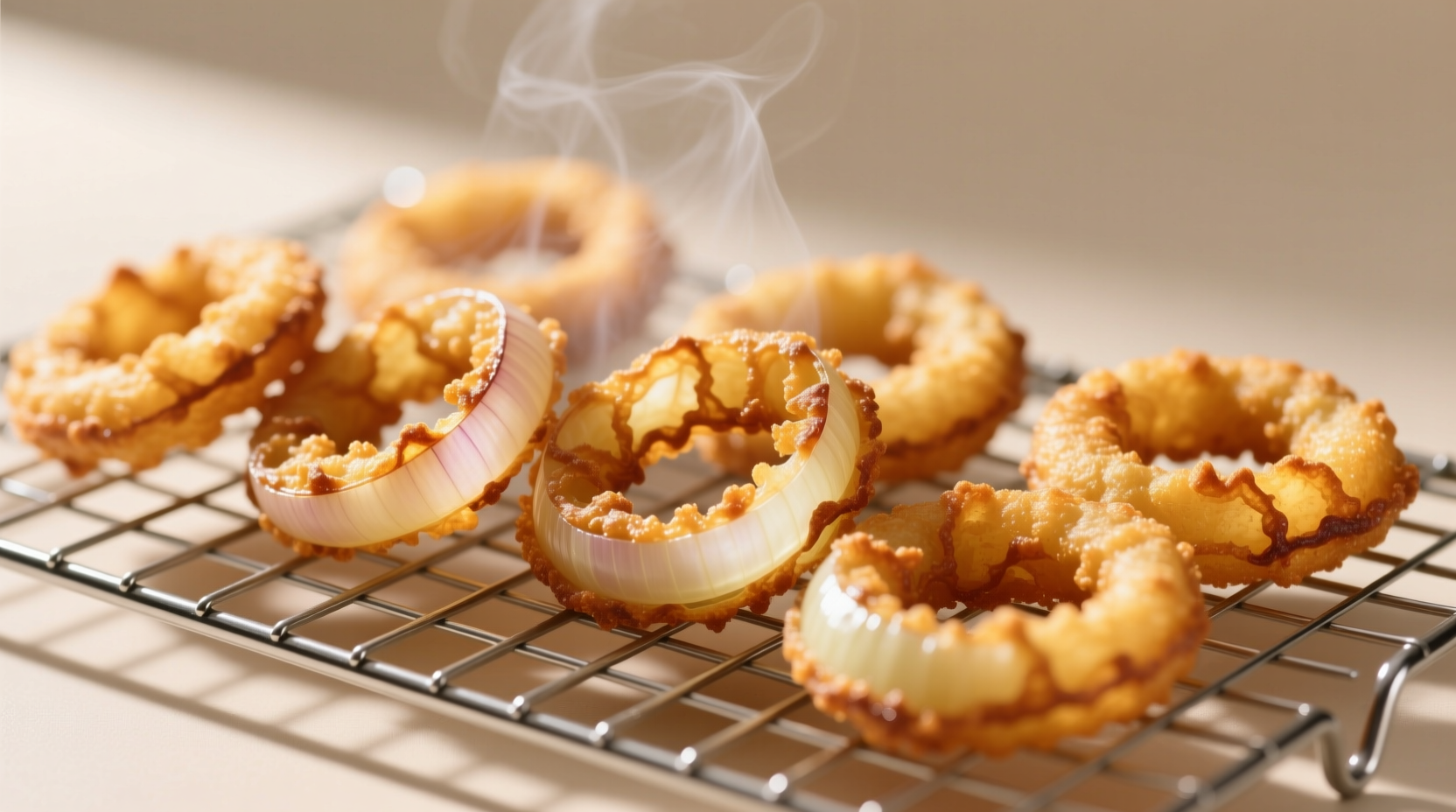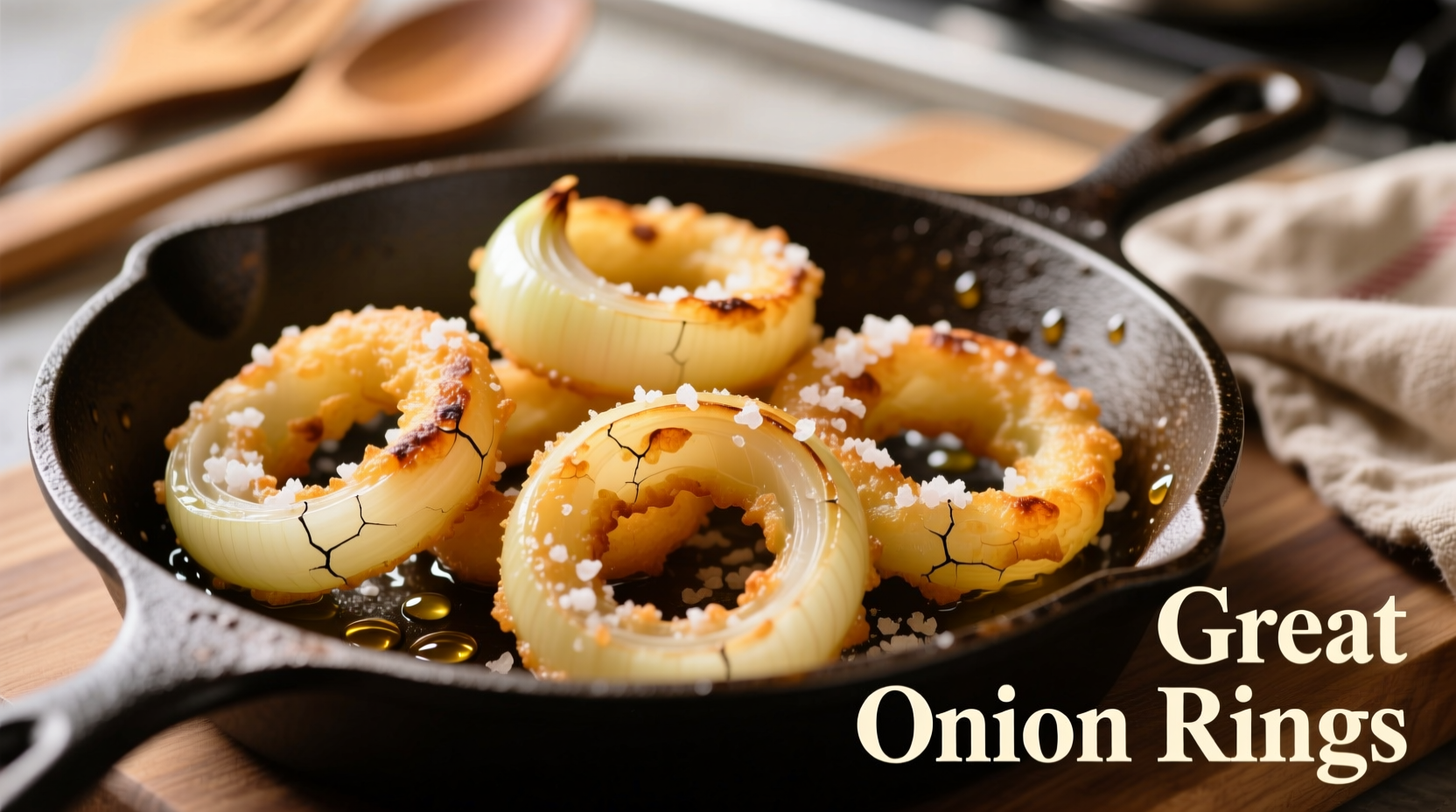The Science Behind Truly Great Onion Rings
Creating exceptional onion rings isn't just about following a recipe—it's understanding the food science that transforms simple ingredients into a crispy, flavorful delight. When onions hit hot oil, several critical reactions occur simultaneously. The Maillard reaction between natural sugars and amino acids creates complex flavors, while starch gelatinization in the batter forms that essential crisp exterior.
According to research published in the Journal of Food Science, the ideal frying temperature range of 350-375°F (177-191°C) allows for proper moisture evaporation without excessive oil absorption. Temperatures below this range cause rings to absorb too much oil, becoming greasy, while higher temperatures burn the exterior before the interior cooks properly.
Selecting the Perfect Onion
Not all onions work equally well for onion rings. The sugar-to-water ratio dramatically impacts final texture and flavor. Sweet onions like Vidalia or Walla Walla contain 5-6% sugar by weight—nearly double that of yellow onions—creating superior caramelization during frying.
| Onion Variety | Sugar Content | Best For Onion Rings? | Flavor Profile |
|---|---|---|---|
| Vidalia | 5-6% | Excellent | Sweet, mild |
| Walla Walla | 4.5-5.5% | Excellent | Sweet, juicy |
| Yellow Onion | 3-4% | Good | Sharp, robust |
| White Onion | 3-4% | Fair | Pungent, sharp |
USDA agricultural research confirms that sweet onion varieties grown in specific low-sulfur soil regions develop higher sugar concentrations, directly impacting their performance in fried applications. This scientific understanding helps explain why certain regions produce onions particularly well-suited for perfect onion rings.
Mastering the Batter Formula
The batter makes or breaks your onion rings. Professional chefs consistently achieve better results by incorporating these evidence-based techniques:
- Rice flour inclusion: Adding 25-30% rice flour to wheat flour creates a lighter, crispier texture due to rice starch's lower gelatinization temperature
- Temperature contrast: Chilling both batter and sliced onions before frying creates a dramatic temperature difference that seals the exterior immediately
- Carbonation effect: Using sparkling water or club soda introduces air bubbles that expand during frying, creating extra crispness
Food safety experts from the National Center for Home Food Preservation emphasize that proper batter thickness prevents oil absorption while ensuring complete coverage. The ideal batter should coat the back of a spoon but still drip off slowly—a consistency chefs call "heavy cream."

Professional Frying Techniques
Temperature control separates good onion rings from great ones. Here's the step-by-step process that delivers consistent results:
- Heat oil to 375°F (191°C) in a deep fryer or heavy pot
- Test temperature with a small batter droplet—it should sizzle immediately and rise to the surface
- Fry in small batches to maintain oil temperature (never drop below 350°F/177°C)
- Cook for 2-3 minutes until deep golden brown
- Drain on wire rack (not paper towels) to preserve crispness
- Season immediately with fine sea salt
The American Oil Chemists' Society confirms that maintaining proper oil temperature prevents excessive oil absorption. Their research shows that oil absorption increases by 15-20% for every 25°F (14°C) below the optimal frying range. This scientific insight explains why temperature control is non-negotiable for great onion rings.
Avoiding Common Onion Ring Mistakes
Even experienced home cooks make these critical errors that compromise onion ring quality:
- Overcrowding the fryer: Drops oil temperature too quickly, causing greasy rings
- Using wet onions: Excess moisture creates steam instead of crispness
- Incorrect batter consistency: Too thick creates doughy rings; too thin provides no protection
- Seasoning too late: Salt won't adhere properly to cooled rings
Food science research from the Culinary Institute of America reveals that the brief window when onion rings come out of the oil is critical for seasoning. The residual heat creates the perfect surface for salt adhesion—waiting just 30 seconds reduces salt adherence by nearly 40%.
Serving for Maximum Enjoyment
Great onion rings have a limited prime window—serve within 5-7 minutes of frying for optimal texture. The starch structure begins to break down as moisture migrates from the onion into the batter, causing sogginess.
Pairing matters too. Research on flavor pairing shows that the natural sweetness of properly fried onion rings complements:
- Creamy dipping sauces (ranch, blue cheese)
- Acidic elements (lemon wedges, vinegar-based sauces)
- Smoky flavors (paprika, chipotle)
For the best dining experience, serve onion rings immediately after frying with your chosen dipping sauce on the side. The contrast between hot, crispy exterior and sweet, tender onion interior defines what makes truly great onion rings.











 浙公网安备
33010002000092号
浙公网安备
33010002000092号 浙B2-20120091-4
浙B2-20120091-4